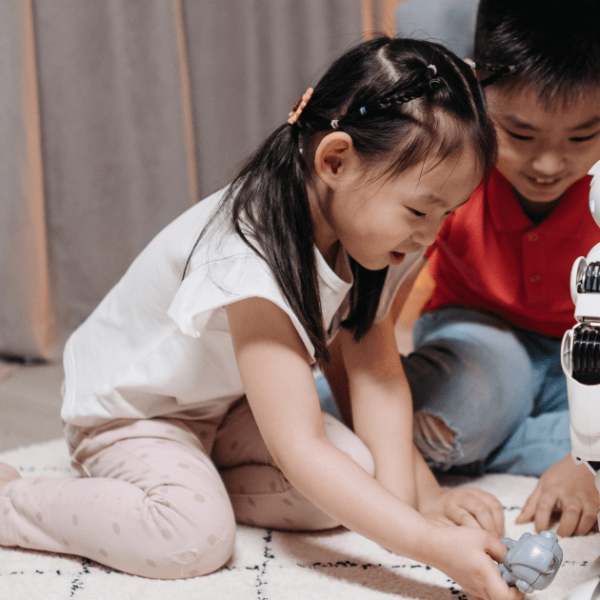Social Innovation to Prevent Gender Violence

Social Innovation to Prevent Gender Violence

During the year 2023, fifty-eight women and two minors died due to gender-based violence in Spain. How can we use social innovation to prevent and address this issue?
Table of contents
What is gender violence?
According to the United Nations, gender-based violence is “any act of violence based on the female sex that results in physical, sexual, or psychological harm or suffering to women, as well as threats of such acts […] or arbitrary deprivation of liberty […]”. This violence is rooted in unequal power relations between men and women and is structural.
In Spain, according to data from the Ministry of Equality, 1,245 women have been murdered by gender violence between January 2003 and February 2024. During the last month, more than eight thousand calls have been received on the victim assistance hotline (016). During the year 2023, fifty-eight women and two minors died due to gender-based violence in Spain.
Social services and gender violence
Demands for gender violence are diverse and involve different areas. Consequently, there are many professionals involved in the process. One of the main problems faced by victims is revictimization, which occurs when they have to explain the events they have experienced many times, to different professionals. Consequently, the feeling of vulnerability and helplessness is reinforced. For this reason, it is important that there is good coordination among professionals.
On the other hand, the role of social workers is crucial in the fight against gender violence. In this sense, preventive socialization is discussed. This concept refers to the acquisition of values and norms that prevent macho behaviors and favor equality values. Professional training is essential to ensure early intervention, as well as effective and respectful management of cases.
When addressing gender violence with victims, it is important to consider some aspects:
- Listen without judgment. Do not hold the victim responsible for their situation and avoid compassion.
- Do not overwhelm with excessive information or insist on intimate details of the aggression.
- Respect the decisions of the victim and do not act without their consent. However, it is important to emphasize the possible risk situation in which they find themselves.
- Accompany in the process, even if it is slow.
- Inform about the available reporting channels without pressuring the victim to choose a specific path.
Social Innovation to Prevent Gender Violence
Social innovation is key in the field of prevention and management of gender violence cases, as new technologies, as well as new approaches, allow us to approach the problem in a more efficient and transformative way.
- Empowerment of women. To combat gender violence, it is essential to carry out prevention strategies. In this sense, numerous organizations have promoted applications with information and resources to detect violence situations and be able to combat them. An example is SARA (UNDP), a free and confidential chat that guides and accompanies victims. There are also platforms aimed at promoting the safety of women in dangerous situations, such as the bSafe app. This tool allows sharing real-time location, recording videos and audios in alarm situations, and generating fake calls to deter potential aggressors.
- Community involvement. Another key element is to generate links between the community to involve all actors in the eradication of discrimination. The MADRE project, in collaboration with Wangki Tangni, mobilized communities in Nicaragua to create joint action plans, through which groups identify problems and offer solutions to combat machismo in the region. There are also digital options that allow involving a large number of people in the prevention and elimination of these violences. In Gurgaon (Haryana, India), they have promoted the SafetiPin initiative, which promotes community collaboration through an application where users can send information about spaces and aspects of urban roads that can be potentially dangerous through maps. For example, street lighting, the absence of police presence in the area, and the low circulation of vehicles.
- Intersectional perspective. Not all women experience violence in the same way. In addition to the gender variable, other aspects such as social class, race, or sexual orientation also affect. In Mexico, through a survey conducted by CIDIP and the Government of CDMX, the need to create specific materials for women with disabilities in situations of gender violence was seen. As a result, CIDIP created the App Morada, aimed at giving tools to these women to understand the specific discrimination they suffer and to ask for help if necessary.
- Technological tools. Although technology has often been highlighted as an instrument that contributes to macho discrimination, for example, through cyberbullying, it also presents positive opportunities to combat this violence. Specifically, the blockchain system achieves registering materials with high protection that prevents them from being modified. This allows registering violent behaviors, with audio or image evidence, in an unalterable way. Therefore, they are valid documents for possible judicial processes. Similarly, artificial intelligence can be used to compare data on gender violence reports and detect repeating patterns. This has been done by the Complutense University of Madrid and the Ministry of the Interior, through a project that allows obtaining more accurate diagnoses and predicting cases of recidivism.
In conclusion, social innovation presents new ways to prevent and manage gender violence, a problem that continues to be present in our society and that requires the involvement of all sectors to be eradicated.
References
Diez caminos para prevenir la violencia contra las mujeres y las niñas | ONU Mujeres. (s. f.). ONU Mujeres. https://www.unwomen.org/es/noticias/articulo-explicativo/2023/11/diez-caminos-para-prevenir-la-violencia-contra-las-mujeres-y-las-ninas#:~:text=Diez%20caminos%20para%20prevenir%20la%20violencia%20contra%20las,8%20Empoderar%20a%20la%20juventud%20. . .%20M%C3%A1s%20elementos [15/04/24]
Elboj, C., & Ruiz Eugenio, L. (2010). TRABAJO SOCIAL Y PREVENCIÓN DE LA VIOLENCIA DE GÉNERO. Trabajo Social Global-Global Social Work, 1(2), 220–233. https://doi.org/10.30827/tsg-gsw.v1i2.912 [15/04/24]
Iniciativas contra la violencia de género. (s. f.). Instituto de las Mujeres. https://www.inmujeres.gob.es/imioweb/1_AreasTematicas/1_SocInfor/1_Iniciativas/4_ContraViolencia/ContraLaViolenciaDeGenero.pdf [15/04/24]
Juan Martín, M. D. (2017). Violencia de género y servicios sociales: análisis la aplicación del objetivo” violencia cero” desde los servicios sociales básicos. https://uvadoc.uva.es/bitstream/handle/10324/26723/TFG-G2506.pdf;sequence=1 [15/04/24]
Piedra-Cristobal, J., Rosa-Martín, J. J., & Muñoz-Domínguez, M. C. (2018). Intervención y prevención de la violencia de género: un acercamiento desde el trabajo social. Trabajo Social Global-Global Social Work, 8(14), 195–216. https://doi.org/10.30827/tsg-gsw.v8i14.6595 [15/04/24]
Pinedo, M. (2021, 2 septiembre). Matemáticas e inteligencia artificial contra el maltrato machista. El País. https://elpais.com/sociedad/2021-09-02/matematicas-e-inteligencia-artificial-contra-el-maltrato-machista.html [15/04/24]
Principales datos sobre violencia de género. (2024). Ministerio de Igualdad. https://violenciagenero.igualdad.gob.es/violenciaEnCifras/boletines/boletinMensual/2024/docs/Principales_datos_enero_2024.pdf [15/04/24]
Vegezzi, A. P., Vegezzi, A. P., & Vegezzi, A. P. (2020, 13 marzo). Lo que la revolución tecnológica puede hacer contra la violencia de género. El País. https://elpais.com/elpais/2020/03/10/planeta_futuro/1583861107_474286.html [15/04/24]
Articles







